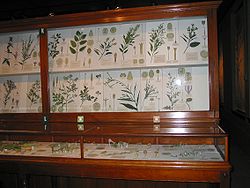
The Natural History Museum in London is a museum that exhibits a vast range of specimens from various segments of natural history. It is one of three major museums on Exhibition Road in South Kensington, the others being the Science Museum and the Victoria and Albert Museum. The Natural History Museum's main frontage, however, is on Cromwell Road.

The French National Museum of Natural History, known in French as the Muséum national d'histoire naturelle, is the national natural history museum of France and a grand établissement of higher education part of Sorbonne Universities. The main museum, with four galleries, is located in Paris, France, within the Jardin des Plantes on the left bank of the River Seine. It was formally founded in 1793, during the French Revolution, but was begun even earlier in 1635 as the royal garden of medicinal plants. The museum now has 14 sites throughout France.
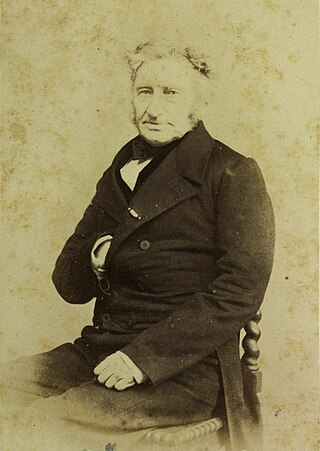
Heinrich Gottlieb Ludwig Reichenbach was a German botanist, ornithologist and illustrator. It was he who first requested Leopold Blaschka to make a set of glass marine invertebrate models for scientific education and museum showcasing, the successful commission giving rise to the creation of the Blaschkas' Glass sea creatures and, subsequently and indirectly, the more famous Glass Flowers.

The Grant Museum of Zoology and Comparative Anatomy is a natural history museum that is part of University College London in London, England. It was established by Robert Edmond Grant in 1828 as a teaching collection of zoological specimens and material for dissection. It is one of the oldest natural history collections in the UK, and is the last remaining university natural history museum in London. Notable specimens and objects held by the museum include a rare quagga skeleton, thylacine specimens, dodo bones and Blaschka glass models.

Addison Emery Verrill was an American invertebrate zoologist, museum curator and university professor.
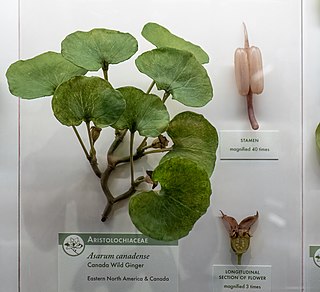
The Ware Collection of Blaschka Glass Models of Plants is a collection of highly realistic glass botanical models at the Harvard Museum of Natural History in Cambridge, Massachusetts.
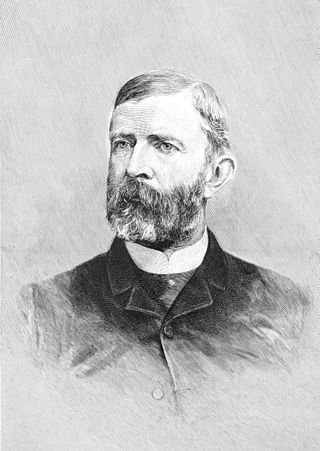
George Lincoln Goodale was an American botanist and the first director of Harvard's Botanical Museum. It was he who commissioned the making of the university's legendary Glass Flowers collection.
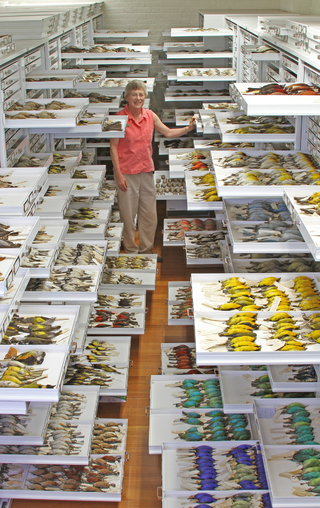
The Museum of Comparative Zoology is a zoology museum located on the grounds of Harvard University in Cambridge, Massachusetts. It is one of three natural-history research museums at Harvard, whose public face is the Harvard Museum of Natural History. Harvard MCZ's collections consist of some 21 million specimens, of which several thousand are on rotating display at the public museum. In July 2021, Gonzalo Giribet, Alexander Agassiz Professor of Zoology at Harvard and Curator of Invertebrate Zoology, was announced as the new director of the museum.

The Harvard University Herbaria and Botanical Museum are institutions located on the grounds of Harvard University at 22 Divinity Avenue, Cambridge, Massachusetts. The Botanical Museum is one of three which comprise the Harvard Museum of Natural History.

The Mineralogical and Geological Museum at Harvard (MGMH), or the Harvard Mineralogical Museum, is located on the campus of Harvard University in Cambridge, Massachusetts. It is one of the three research museums which collectively comprise the collection of the Harvard Museum of Natural History.

Oakes Ames was an American biologist specializing in orchids. His estate is now the Borderland State Park in Massachusetts. He was the son of Governor of Massachusetts Oliver Ames and grandson of Congressman Oakes Ames.

The Musée zoologique de la ville de Strasbourg is a natural history museum managing and displaying the zoological collections of the city of Strasbourg. It is housed in a historical building of the University of Strasbourg. The museum is closed since September 2019, and until 2025 for renovation and enlargement.

Leopold Blaschka and his son Rudolf Blaschka were glass artists from Dresden, Germany. They were known for their production of biological and botanical models, including glass sea creatures and Harvard University's Glass Flowers.

Glass art refers to individual works of art that are substantially or wholly made of glass. It ranges in size from monumental works and installation pieces to wall hangings and windows, to works of art made in studios and factories, including glass jewelry and tableware.

A zoological specimen is an animal or part of an animal preserved for scientific use. Various uses are: to verify the identity of a (species), to allow study, increase public knowledge of zoology. Zoological specimens are extremely diverse. Examples are bird and mammal study skins, mounted specimens, skeletal material, casts, pinned insects, dried material, animals preserved in liquid preservatives, and microscope slides. Natural history museums are repositories of zoological specimens

Mary Lee Ware, daughter of Elizabeth Cabot (Lee) Ware and Charles Eliot Ware, was born to a wealthy Bostonian family and, with her mother, was the principal sponsor of the Harvard Museum of Natural History's famous Glass Flowers. She was an avid student of botany, particularly of the work of George Lincoln Goodale; a close friend and sponsor of Leopold and Rudolf Blaschka, creators of the Glass Flowers; and a leading philanthropist and farmer of Rindge, New Hampshire, and Boston, Massachusetts.

Charles Eliot Ware was a prominent Boston physician. He was the husband of Elizabeth Cabot Lee and the father of Mary Lee Ware. These women commissioned the famous Glass Flowers exhibit at the Harvard Museum of Natural History in his memory. Ware was also a close friend of John Holmes, the younger brother of Oliver Wendell Holmes Sr.
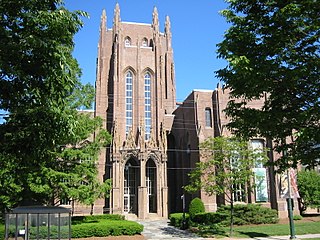
The Peabody Museum of Natural History at Yale University is one of the oldest, largest, and most prolific university natural history museums in the world. It was founded by the philanthropist George Peabody in 1866 at the behest of his nephew Othniel Charles Marsh, an early paleontologist. The museum is best known for the Great Hall of Dinosaurs, which includes a mounted juvenile Brontosaurus and the 110-foot-long (34 m) mural The Age of Reptiles. The museum also has permanent exhibits dedicated to human and mammal evolution; wildlife dioramas; Egyptian artifacts; local birds and minerals; and Native Americans of Connecticut.

The glass sea creatures are works of glass artists Leopold and Rudolf Blaschka. The artistic predecessors of the Glass Flowers, the sea creatures were the output of the Blaschkas' successful mail-order business of supplying museums and private collectors around the world with sets of glass models of marine invertebrates.
Catherine Drew Harvell is a marine ecologist that researches ocean biodiversity and ocean health, specializing in diseases in marine ecosystems.





